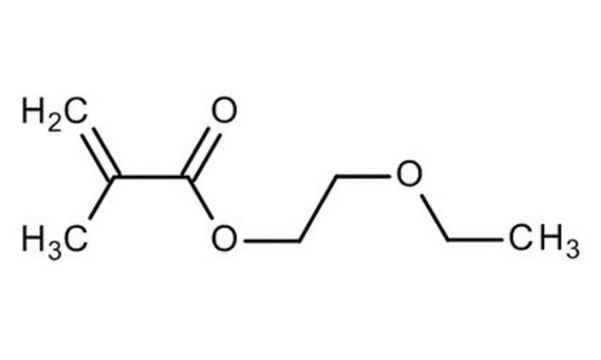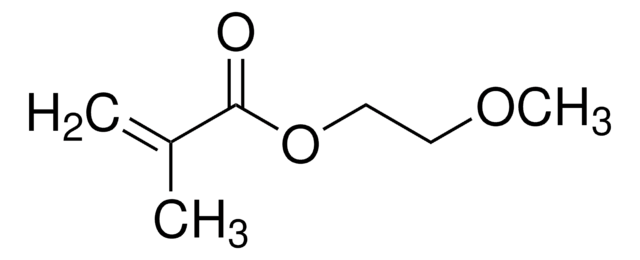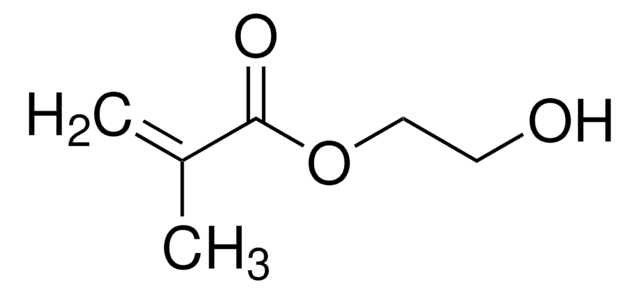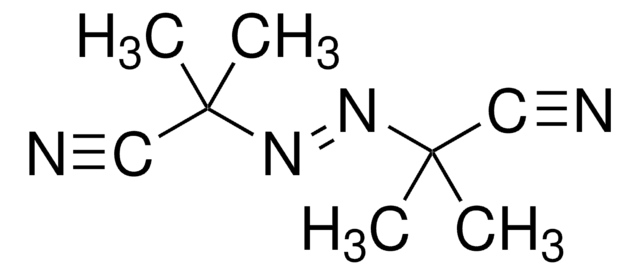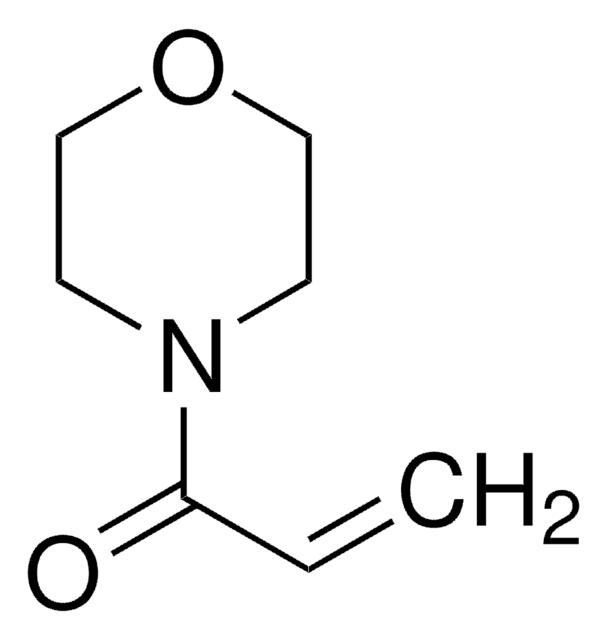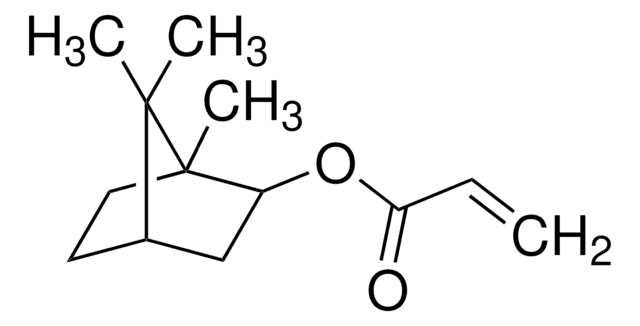280666
2-Ethoxyethyl methacrylate
contains 100 ppm hydroquinone monomethyl ether as inhibitor, 99%
Sign Into View Organizational & Contract Pricing
All Photos(1)
About This Item
Linear Formula:
H2C=C(CH3)CO2CH2CH2OC2H5
CAS Number:
Molecular Weight:
158.19
EC Number:
MDL number:
UNSPSC Code:
12162002
PubChem Substance ID:
NACRES:
NA.23
Recommended Products
Assay
99%
form
liquid
contains
100 ppm hydroquinone monomethyl ether as inhibitor
refractive index
n20/D 1.429 (lit.)
bp
91-93 °C/35 mmHg (lit.)
density
0.964 g/mL at 25 °C (lit.)
storage temp.
2-8°C
SMILES string
CCOCCOC(=O)C(C)=C
InChI
1S/C8H14O3/c1-4-10-5-6-11-8(9)7(2)3/h2,4-6H2,1,3H3
InChI key
SFPNZPQIIAJXGL-UHFFFAOYSA-N
Signal Word
Warning
Hazard Statements
Precautionary Statements
Hazard Classifications
Aquatic Chronic 3 - STOT SE 3
Target Organs
Respiratory system
Storage Class Code
10 - Combustible liquids
WGK
WGK 2
Personal Protective Equipment
dust mask type N95 (US), Eyeshields, Gloves
Choose from one of the most recent versions:
Already Own This Product?
Find documentation for the products that you have recently purchased in the Document Library.
Vicente Compañ et al.
Biomaterials, 26(18), 3783-3791 (2005-01-01)
The oxygen permeability and diffusion coefficients of hydrogel membranes prepared with copolymers of 2-ethoxyethyl methacrylate (EEMA)/2,3-dihydroxypropylmethacrylate (MAG) with mole fraction of the second monomer in the range between 0 and 0.75 are described. Values of the permeability and diffusion coefficients
Dynamic simulation method to characterise oxygen transport in hydrogel membranes.
Zimei Rong et al.
Biomaterials, 27(23), 4266-4268 (2006-04-19)
K Tamareselvy et al.
Dental materials : official publication of the Academy of Dental Materials, 10(5), 290-297 (1994-09-01)
This research investigated the dynamic mechanical properties of two model dental restorative copolymers to elucidate the influence of pendent group length and addition of crosslinking agent. Two different monomethacrylate resins [(methyl methacrylate (MMA) or 2-ethoxyethylmethacrylate (EEM)] were added to various
B W Ziegelaar et al.
Journal of biomaterials science. Polymer edition, 9(8), 849-862 (1998-09-02)
We examined the regulation of collagenase production by the monocyte/macrophage THP-1 cell line when these cells were exposed to poly(2-hydroxyethyl methacrylate) (PHEMA) hydrogel surfaces with different chemistries and morphologies. Tissue culture modified polystyrene (TCP), used as a control surface, induced
T V Chirila et al.
Journal of cataract and refractive surgery, 17(2), 154-162 (1991-03-01)
Development of improved hydrogels for soft intraocular lenses, based on 2-hydroxyethyl methacrylate monomer, requires the use of various other monomers and polymerization additives which have potential ocular toxicity. Three monomers, 2-hydroxyethyl methacrylate, methyl methacrylate, and 2-ethoxyethyl methacrylate, as well as
Our team of scientists has experience in all areas of research including Life Science, Material Science, Chemical Synthesis, Chromatography, Analytical and many others.
Contact Technical Service